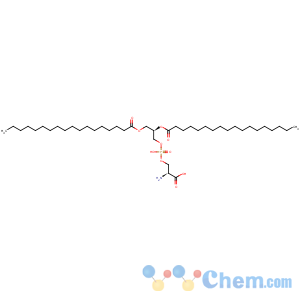Phosphatidylserine
-

Molecular Structure
Detailed Description
Phosphatidylserine
CAS 51446-62-9
Assay: 50%
Appearance: off-white powder.
Package: 1kg per bag
Phosphatidylserine (PS) is a naturally occurring phospholipid that exists in all species, and comprises a portion of the phospholipid pool in human brain (15%), lungs (7.4%), testes (6.4%), kidneys (5.7%), liver (3.8%), skeletal muscle (3.3%), heart (3.2%) and blood plasma (0.2%) with an estimated 60g total PS storage in the body where half exists in neural tissue.
Phosphatidylserine (PS) is a structure somewhat similar to a triacylglyceride (storage form of dietary fat), but with two fatty acids (diacylglyceride) with the final bonding site on glycerol occupied by a phosphatadic acid molecule and serine amino acid. Various compounds may be called phosphatidylserine given they have that one serine containing group; the other two fatty acid chains are irrelevant to the naming, but not necessarily the function, and may differ depending on source.
Phosphatidylserine supplementation appears to exert anti-stress effects in otherwise healthy persons without stress disorders following prolonged supplementation, and this appears to possibly be independent of the classical biomarkers of stress reduction (cortisol, heart rate)
The anti-stress effect appears to be somewhat different than other supplements and not 100% reliable, and it is uncertain how phosphatidylserine is doing this. It does, however, appear to extend to both soy lecithin based and bovine cortex based phosphatidylserine
Phosphatidylserine has demonstrated some usefulness in treating cognitive impairment, including Alzheimer's disease, age-associated memory impairment and some non-Alzheimer's dementias. More research is needed before phosphatidylserine can be indicated for immune enhancement or for reduction of exercise stress.

- Phosphatidylserine


 frankfan169@hotmail.com
frankfan169@hotmail.com



